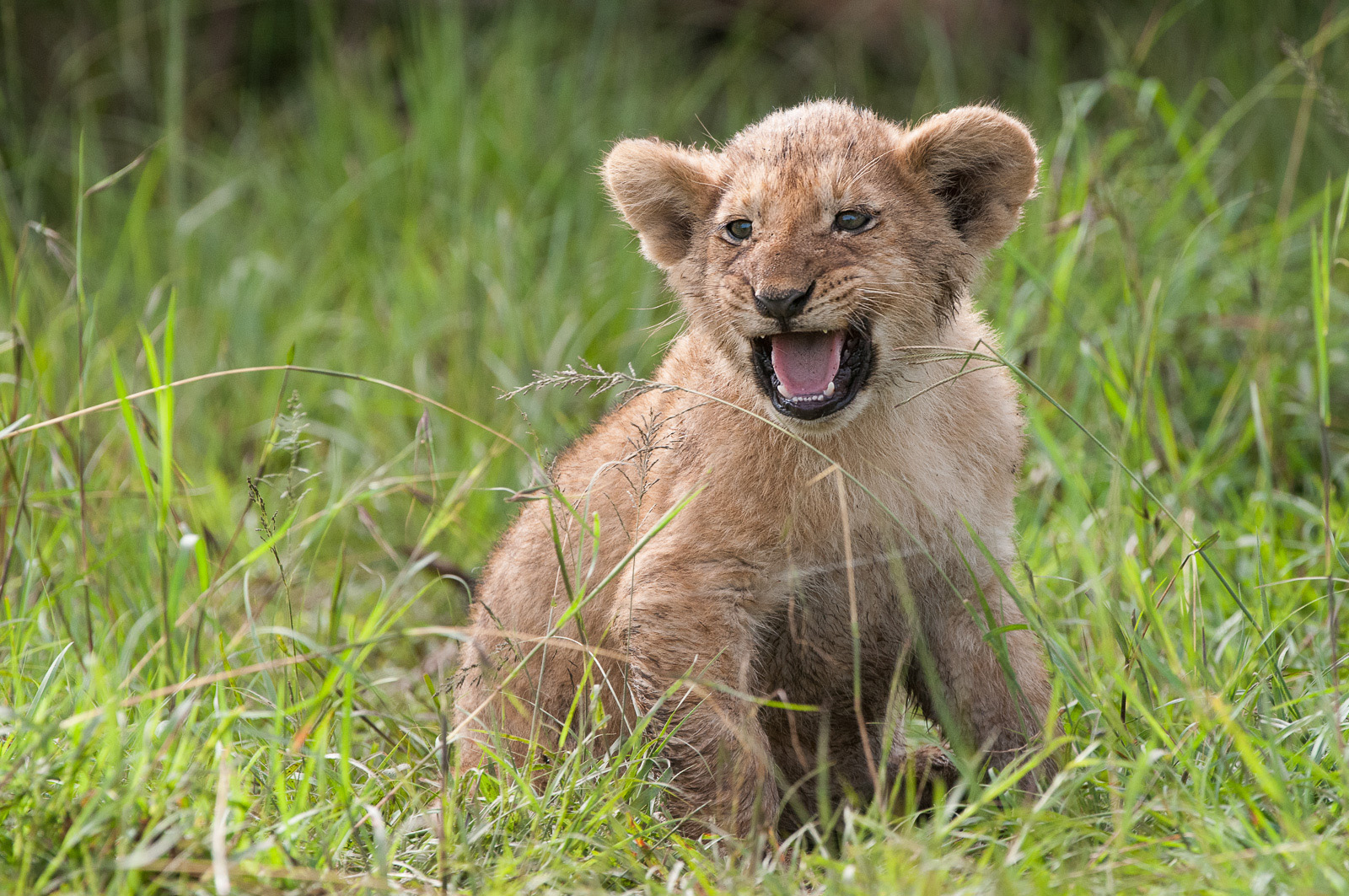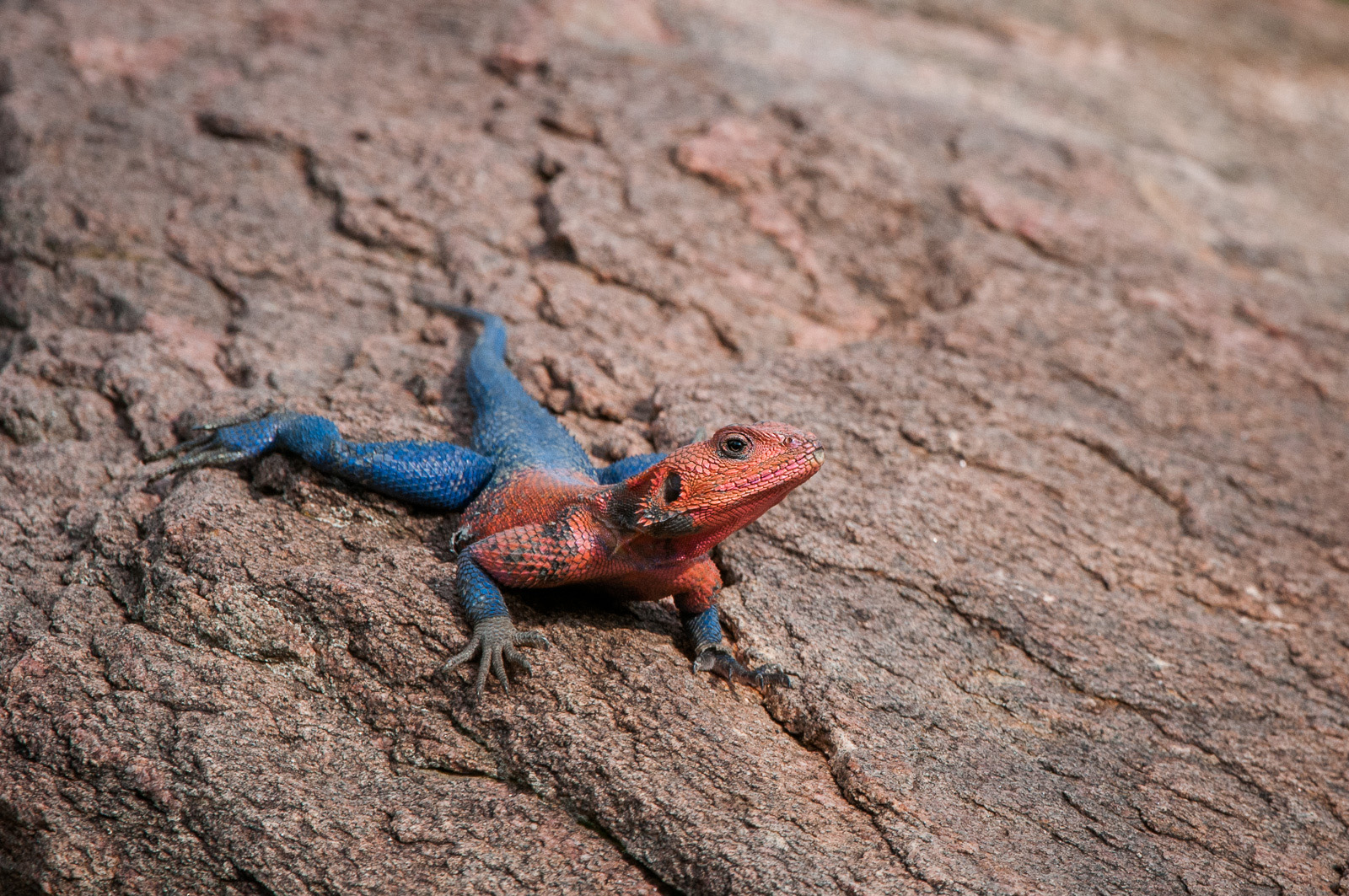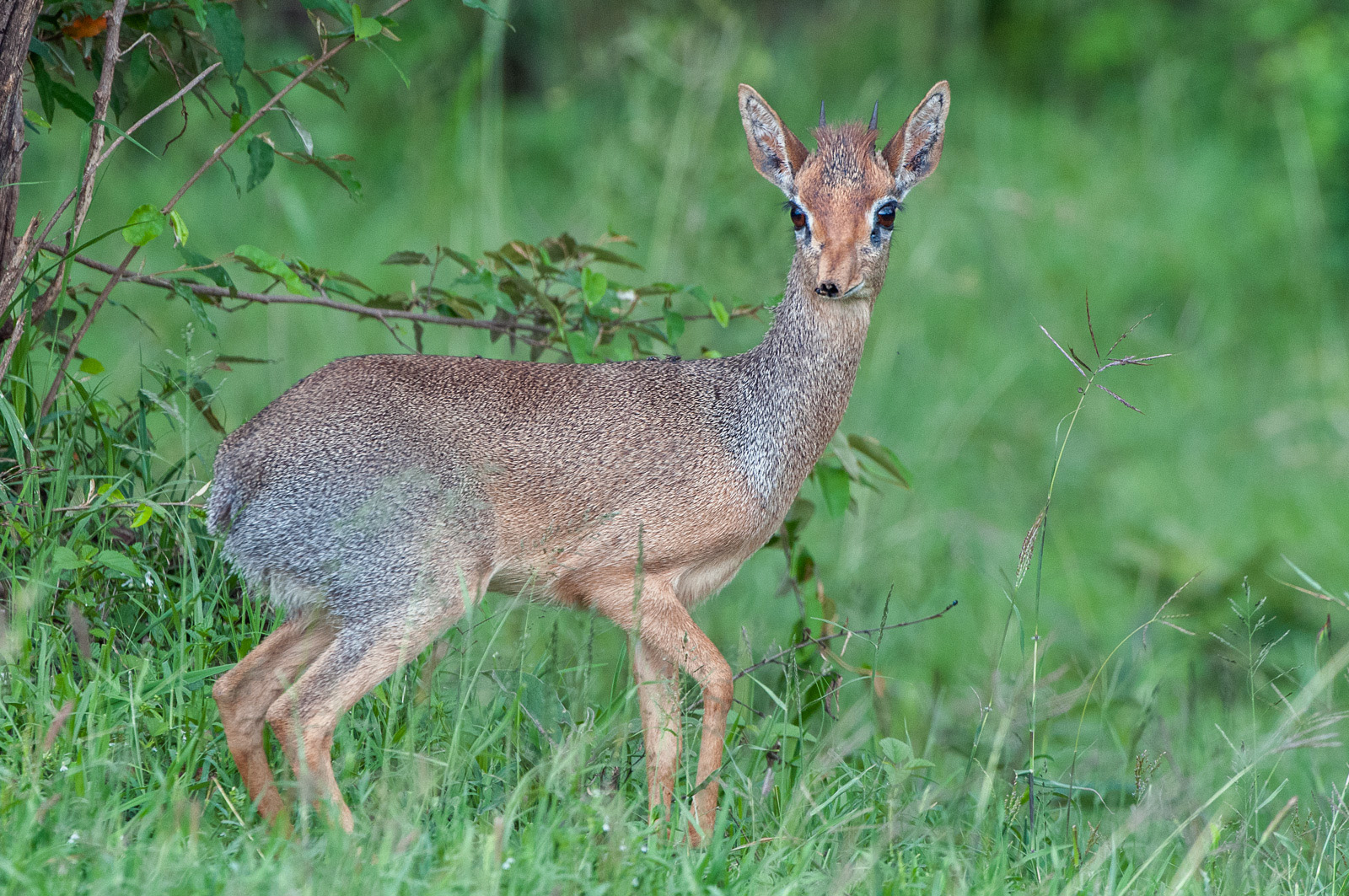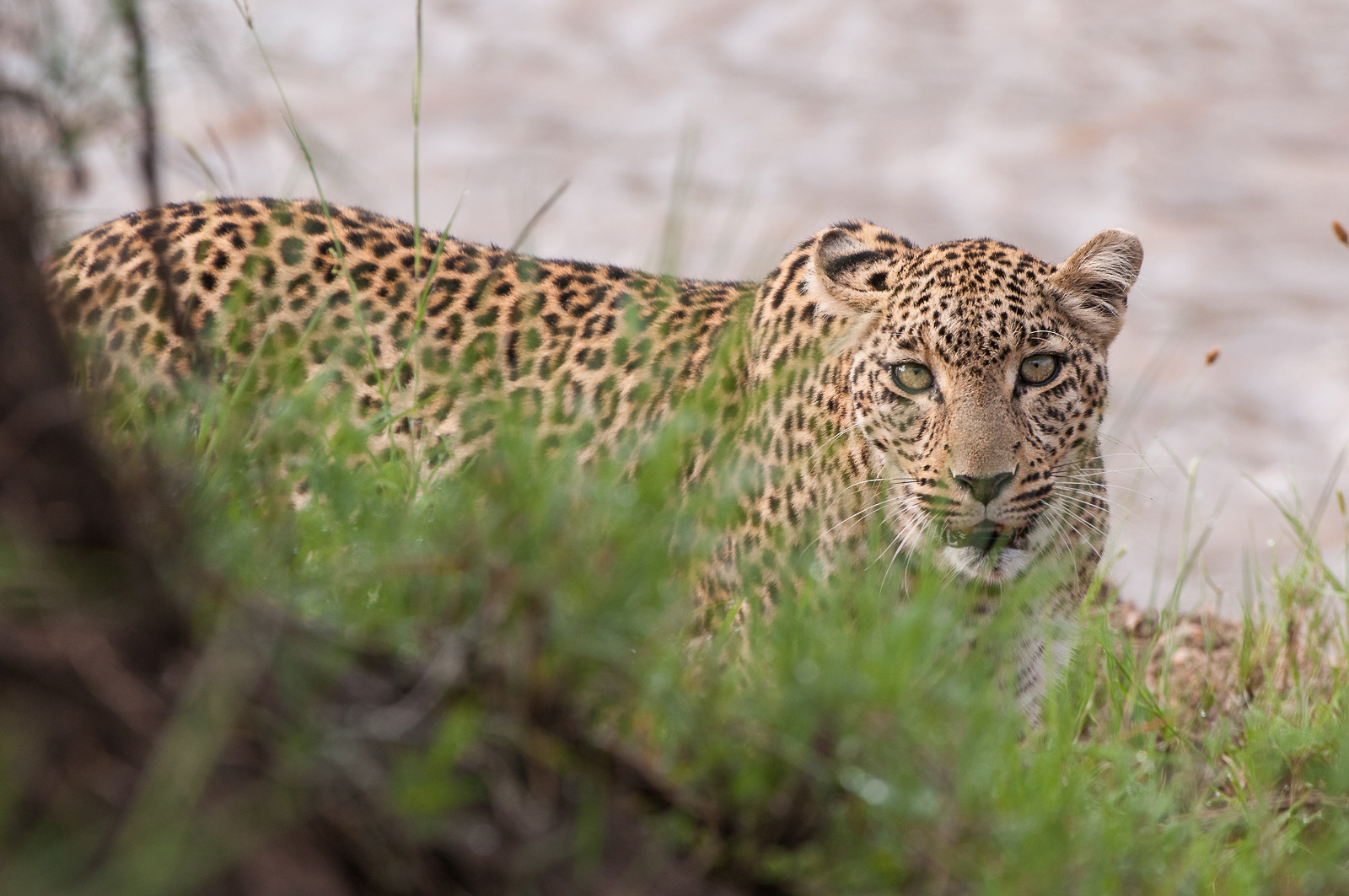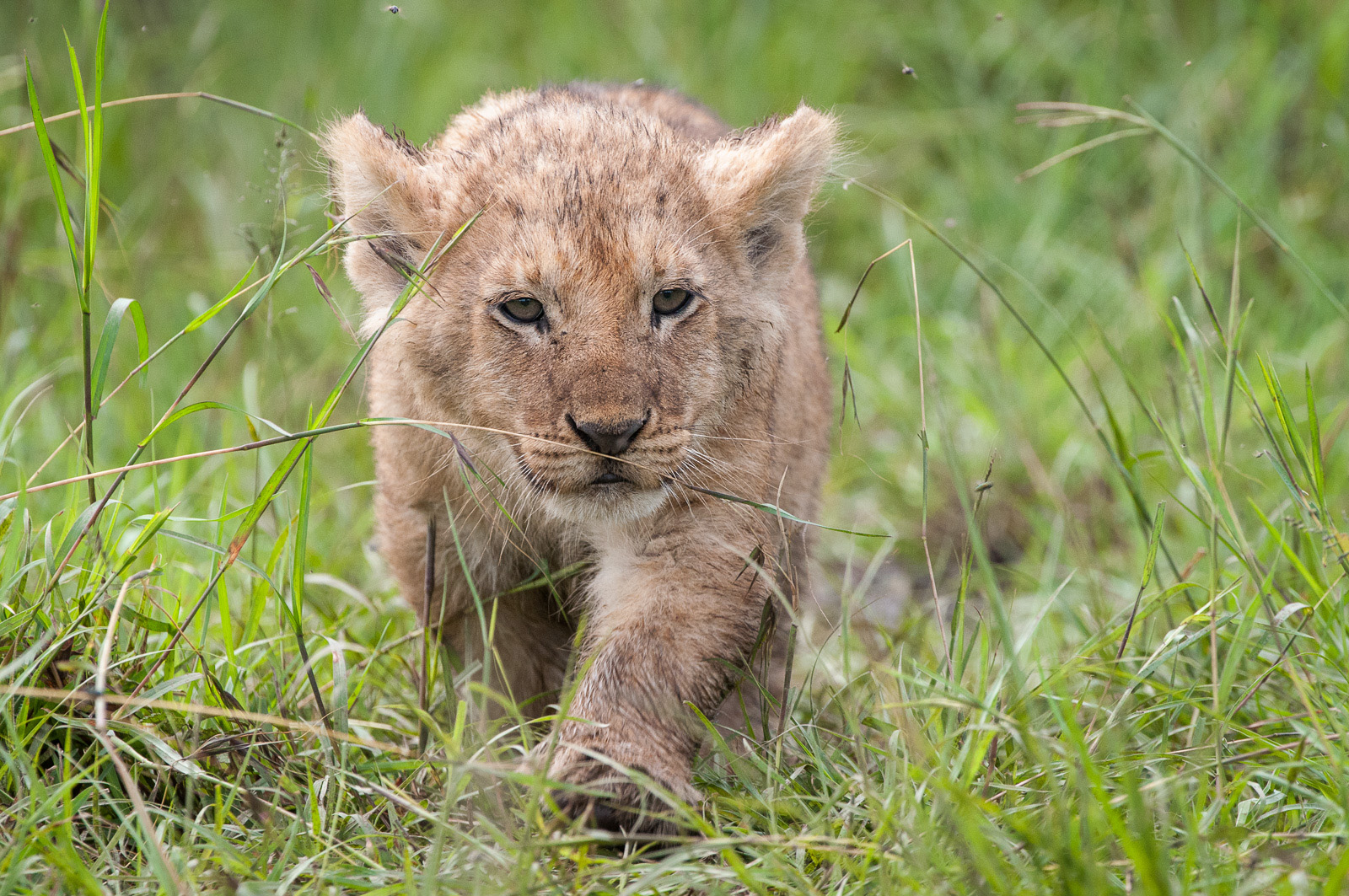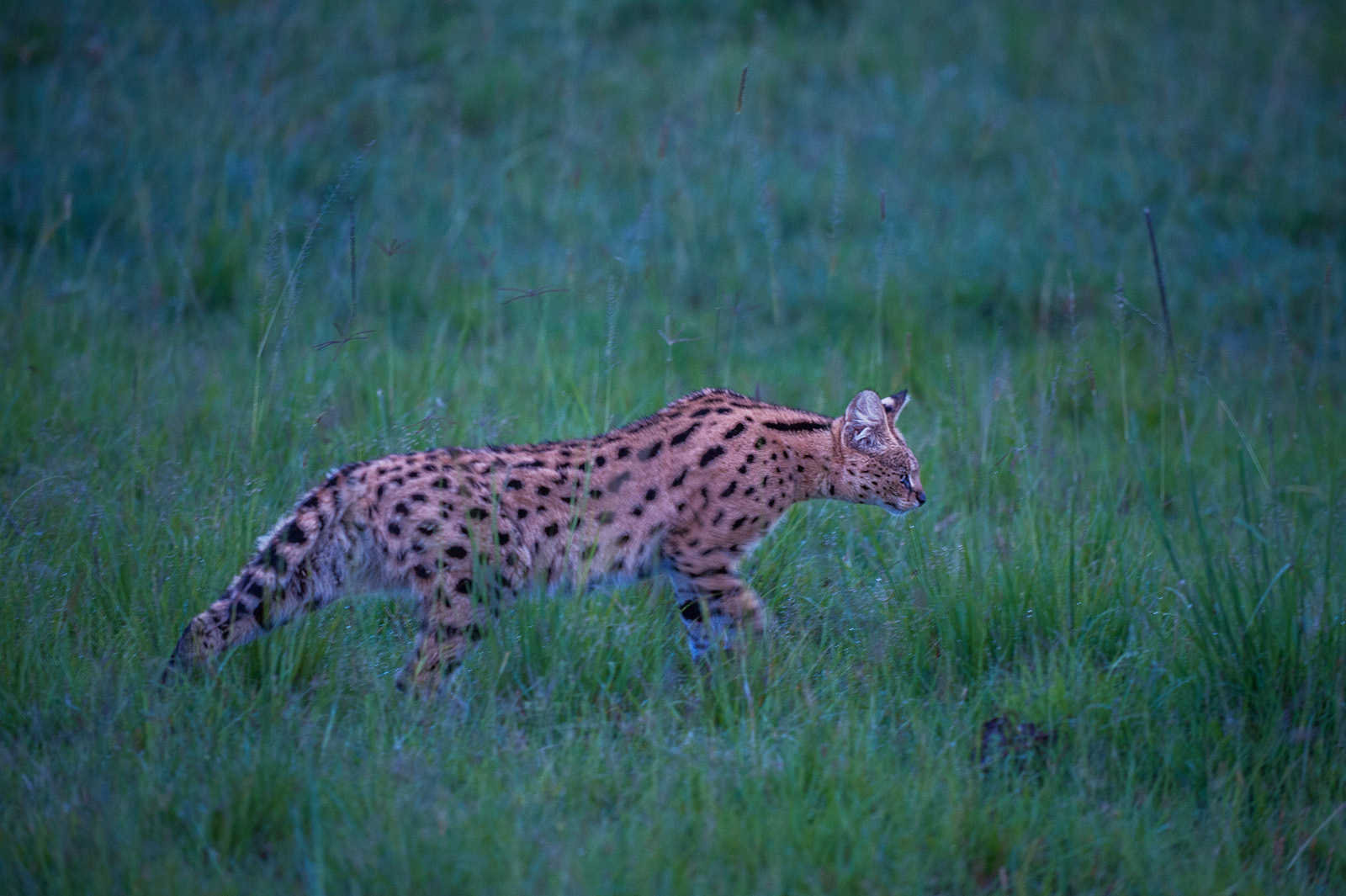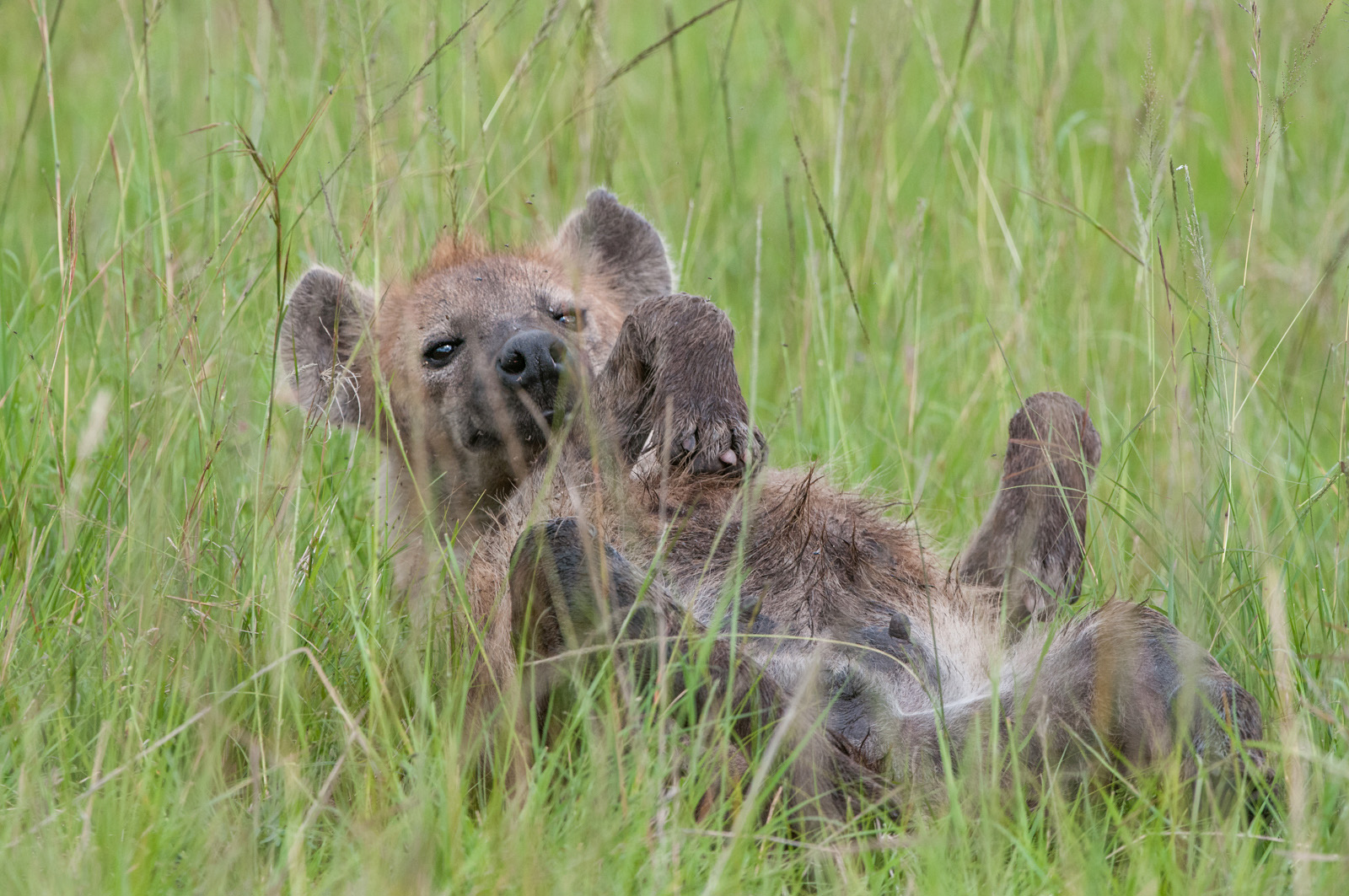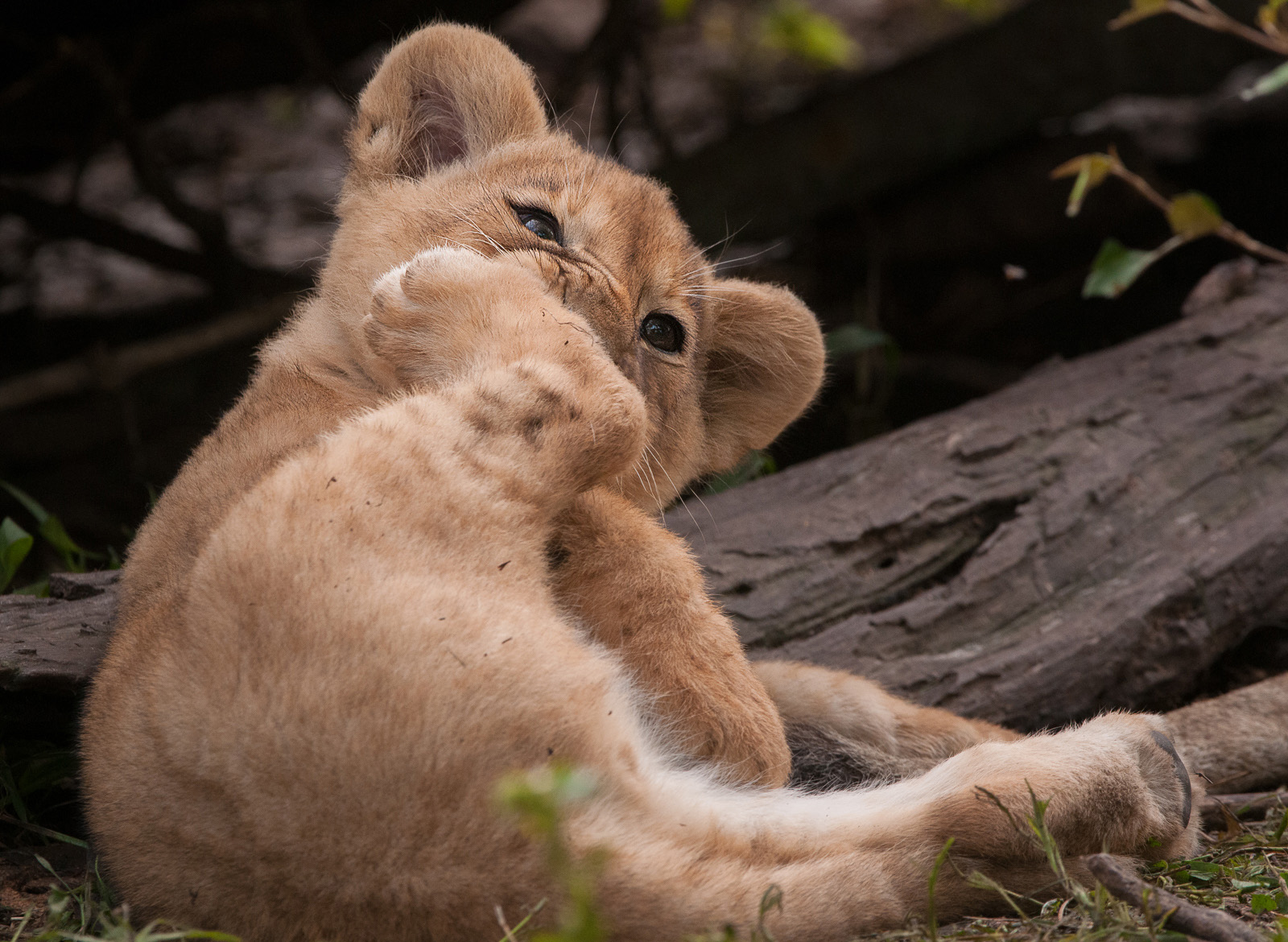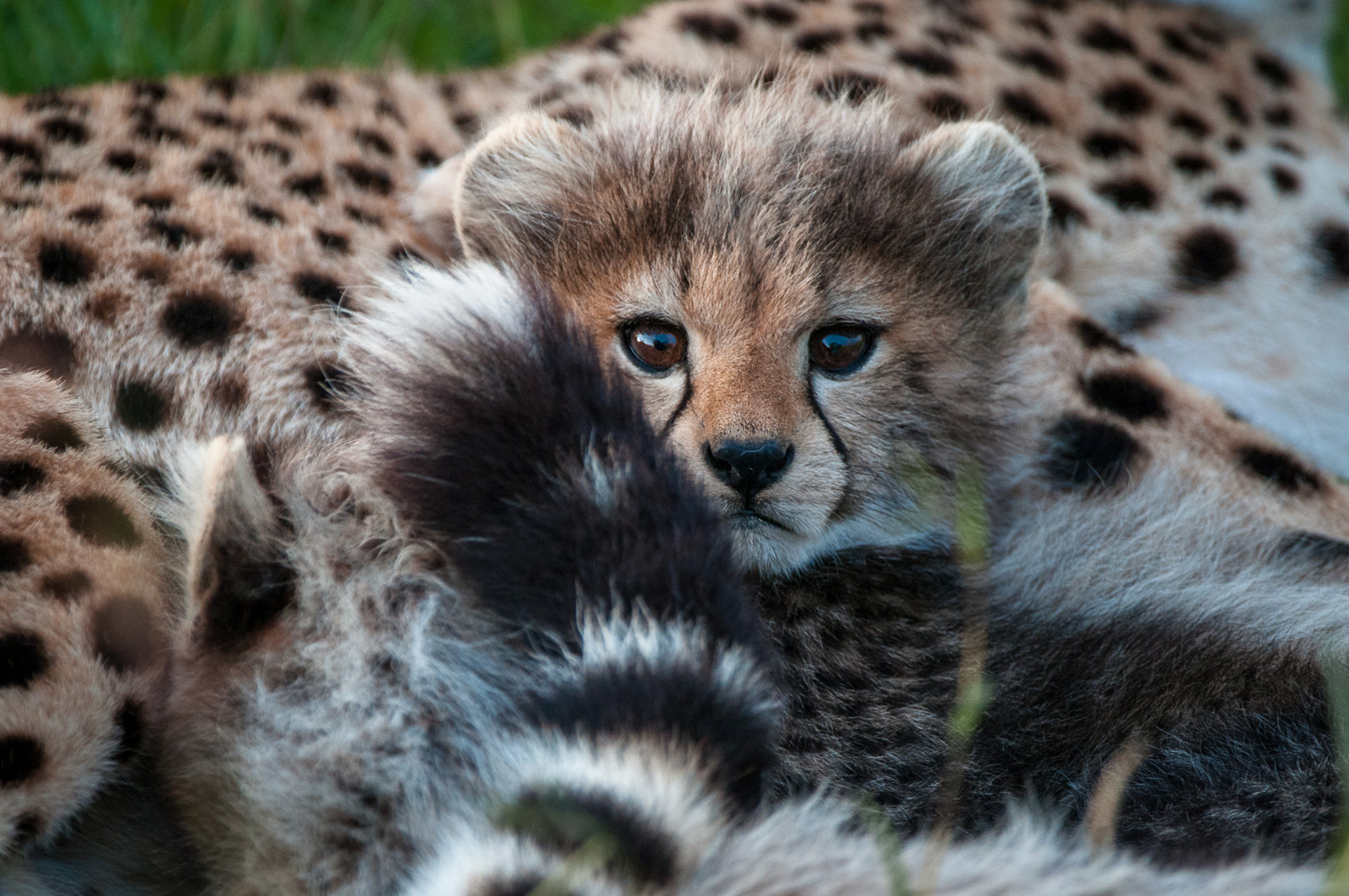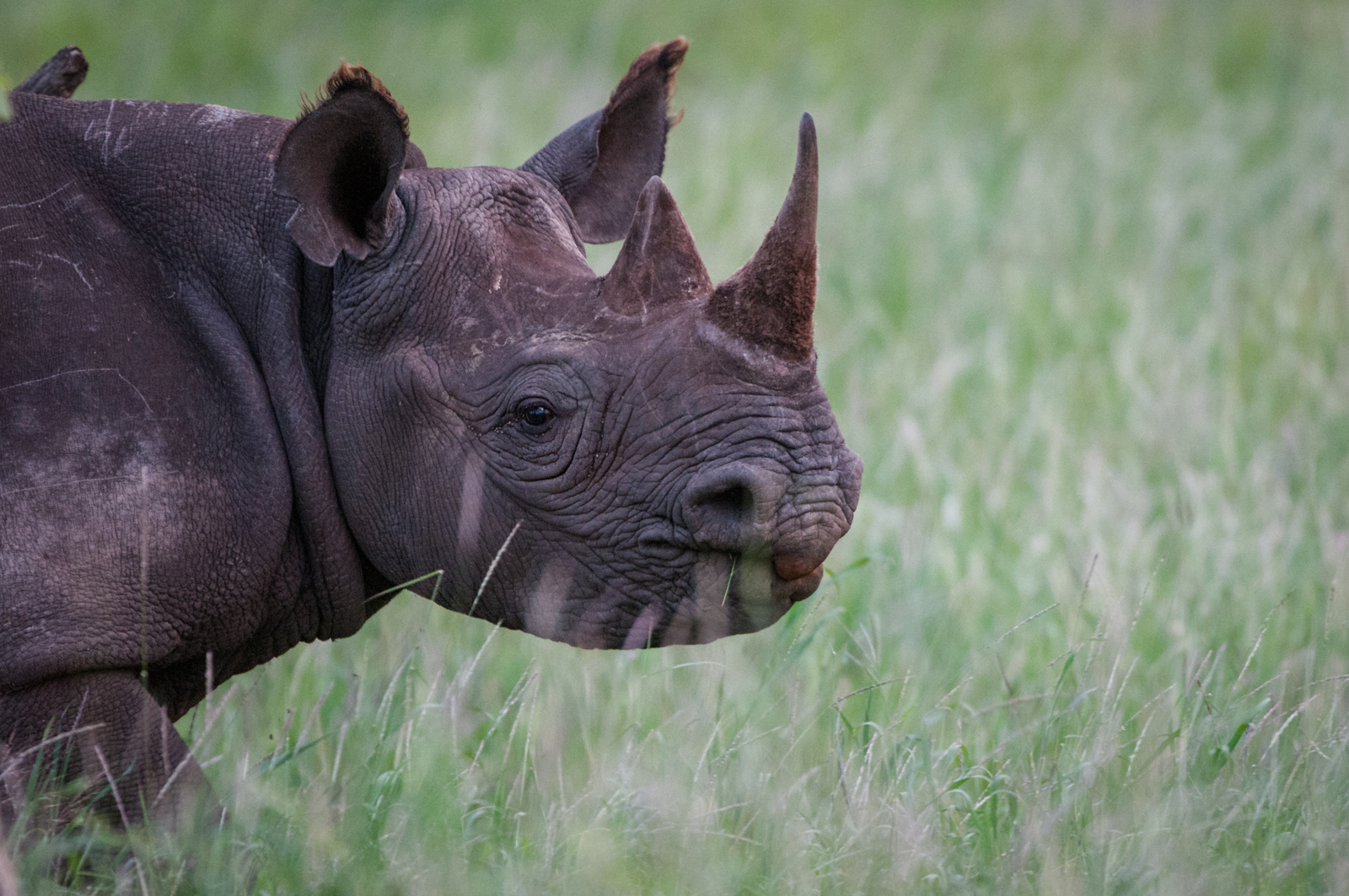Red-Headed Agama Lizard
 It’s easy to see why these lizards are often referred to as the Spiderman lizard. The more common common name is the red-headed agama lizard, also known as the red-headed rock agama. This one was taking in the sun atop a rock in the Masai Mara of Kenya.
It’s easy to see why these lizards are often referred to as the Spiderman lizard. The more common common name is the red-headed agama lizard, also known as the red-headed rock agama. This one was taking in the sun atop a rock in the Masai Mara of Kenya.
Nikon D300 with Nikkor 200-400mm lens (at 400mm) ISO 400, f/8 at 1/400th of a second
Dik Dik
 Dik diks are only about 15 inches tall at the shoulder and about 27 inches long. They are very small deer that live throughout Eastern Africa. I mean, really small. They actually kind of look like a large rabbit bouncing across the savanna. I photographed this one smiling for the camera in a private concession of the Masai Mara in Kenya.
Dik diks are only about 15 inches tall at the shoulder and about 27 inches long. They are very small deer that live throughout Eastern Africa. I mean, really small. They actually kind of look like a large rabbit bouncing across the savanna. I photographed this one smiling for the camera in a private concession of the Masai Mara in Kenya.
Nikon D300 with Nikkor 200-400mm lens (at 400mm) ISO 800, f/5.6 at 1/640th of a second
Leopard Stare
 Sometimes you pop around a corner and come face to face with a leopard. That’s what happened on this occasion in the Olare Orok Conservancy, a private concession of the Masai Mara in Kenya. We had seen this female earlier in the day, but lost sight of her until she suddenly appeared just in front of our safari vehicle.
Sometimes you pop around a corner and come face to face with a leopard. That’s what happened on this occasion in the Olare Orok Conservancy, a private concession of the Masai Mara in Kenya. We had seen this female earlier in the day, but lost sight of her until she suddenly appeared just in front of our safari vehicle.
Nikon D300 with Nikkor 200-400mm lens (at 400mm) ISO 400, f/5.6 at 1/400th of a second
Lion Cub on the Prowl
 This tiny little lion cub kept leaving his mother to get a better look at us. He’d make a bit of a half-hearted charge and then return back to her. We were in the Olare Orok Conservancy which is a private concession on the northern border of the Masai Mara in Kenya.
This tiny little lion cub kept leaving his mother to get a better look at us. He’d make a bit of a half-hearted charge and then return back to her. We were in the Olare Orok Conservancy which is a private concession on the northern border of the Masai Mara in Kenya.
Nikon D300 with Nikkor 200-400mm lens (at 400mm) ISO 800, f/5.6 at 1/640th of a second
Serval
 I spotted this serval on the final night of our trip to Kenya. The sun had long since set but there was still just enough light to capture the cat slowly creeping through the grass in the blue hues of dusk. Servals are medium-sized cats with small heads, long ears and necks. They also have the longest legs of any wild cat relative to body size. They hunt smaller animals like rodents, birds, and frogs and are great leapers — often jumping more than six feet above the ground before pouncing on their prey.
I spotted this serval on the final night of our trip to Kenya. The sun had long since set but there was still just enough light to capture the cat slowly creeping through the grass in the blue hues of dusk. Servals are medium-sized cats with small heads, long ears and necks. They also have the longest legs of any wild cat relative to body size. They hunt smaller animals like rodents, birds, and frogs and are great leapers — often jumping more than six feet above the ground before pouncing on their prey.
Nikon D700 with Nikkor 70-200mm lens (at 160mm) ISO 1600, f/2.8 at 1/80th of a second
Spotted Hyena Rolling in the Grass
 Hyenas are interesting in that they are genetically more closely related to felines, but behaviorally more like canines. Similar to canines, they are non-arboreal (don’t climb trees) and they hunt by running to catch prey with their teeth rather than their claws. There are other similarities in behavior as well, but ultimately hyenas are neither cats nor dogs but rather their own unique family in the order carnivora. But when they roll around on the ground like this girl was doing in the Masai Mara of Kenya, they certainly look like a few dogs — and cats — that I’ve known in my day.
Hyenas are interesting in that they are genetically more closely related to felines, but behaviorally more like canines. Similar to canines, they are non-arboreal (don’t climb trees) and they hunt by running to catch prey with their teeth rather than their claws. There are other similarities in behavior as well, but ultimately hyenas are neither cats nor dogs but rather their own unique family in the order carnivora. But when they roll around on the ground like this girl was doing in the Masai Mara of Kenya, they certainly look like a few dogs — and cats — that I’ve known in my day.
Nikon D300 with Nikkor 200-400mm lens (at 360mm) ISO 800, f/5.6 at 1/1000th of a second
Lion Cub Likes His Foot
 Much more to come from Thailand, but it’s about time to mix up the posts again with looks at the rest of the world. Places like the Masai Mara in Kenya, where this lion cub was really going to town on that foot. Perhaps he had an itch, or maybe it just tasted good, who knows.
Much more to come from Thailand, but it’s about time to mix up the posts again with looks at the rest of the world. Places like the Masai Mara in Kenya, where this lion cub was really going to town on that foot. Perhaps he had an itch, or maybe it just tasted good, who knows.
Nikon D300 with Nikkor 200-400mm lens (at 360mm) ISO 800, f/6.3 at 1/500th of a second
Baby Cheetah
 Well, here we are at 12:43 AM east coast time. I can’t post the donkey I had lined up. Nor an elephant. But a baby cheetah? Now that you can post any time. I posted a different shot of this guy in the past — that one without so much tail in his face. Enjoy. This will be the last post for about a week and a half as I head to Thailand tomorrow for a six night adventure camping in the jungle.
Well, here we are at 12:43 AM east coast time. I can’t post the donkey I had lined up. Nor an elephant. But a baby cheetah? Now that you can post any time. I posted a different shot of this guy in the past — that one without so much tail in his face. Enjoy. This will be the last post for about a week and a half as I head to Thailand tomorrow for a six night adventure camping in the jungle.
Nikon D300 with Nikkor 200-400mm lens (at 400mm) ISO 800, f/4 at 1/40th of a second
Black Rhinoceros
 Last month, I posted a white rhino. This is the more rare and endangered black rhino (not that the white rhino isn’t in trouble as well). But the black rhino is currently listed as “Critically Endangered.” I saw this one at the Lewa Wildlife Conservancy in Kenya, which is working hard to save these amazing beasts from extinction by protecting them from poachers and other dangers.
Last month, I posted a white rhino. This is the more rare and endangered black rhino (not that the white rhino isn’t in trouble as well). But the black rhino is currently listed as “Critically Endangered.” I saw this one at the Lewa Wildlife Conservancy in Kenya, which is working hard to save these amazing beasts from extinction by protecting them from poachers and other dangers.
Nikon D300 with Nikkor 200-400mm lens (at 400mm) ISO 1600, f/4 at 1/125th of a second


